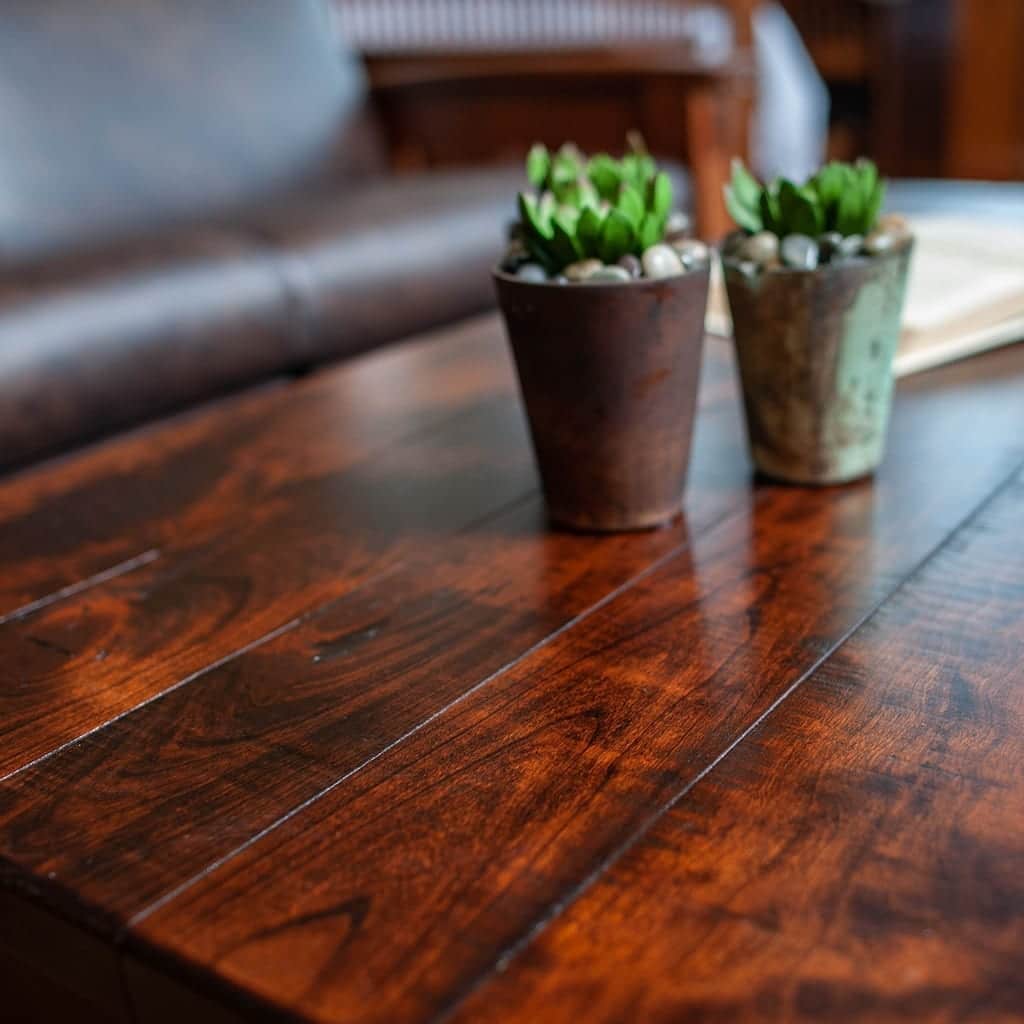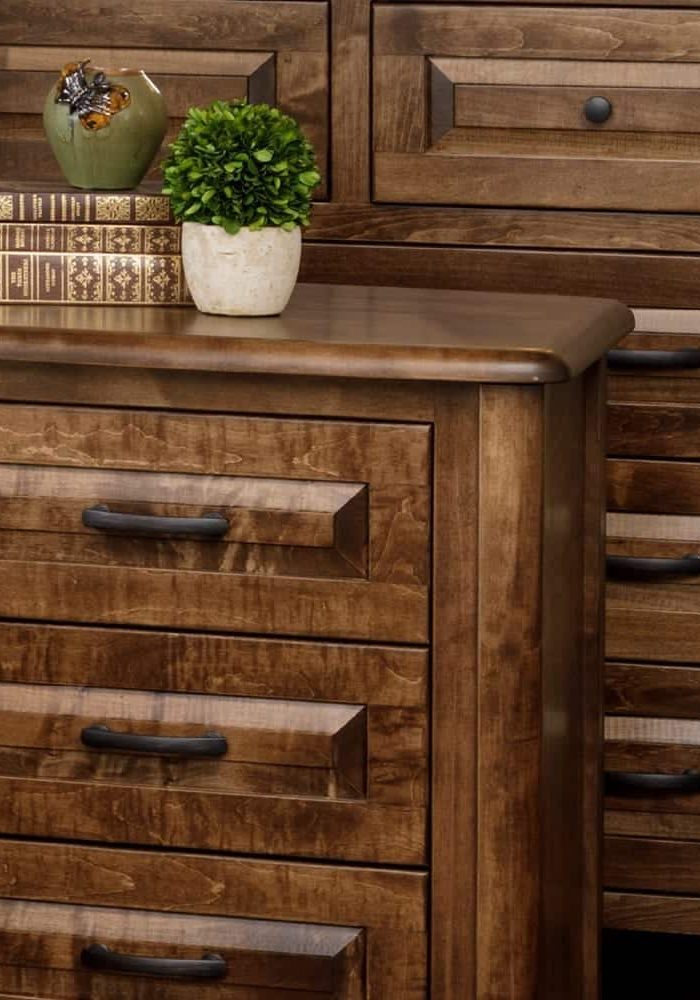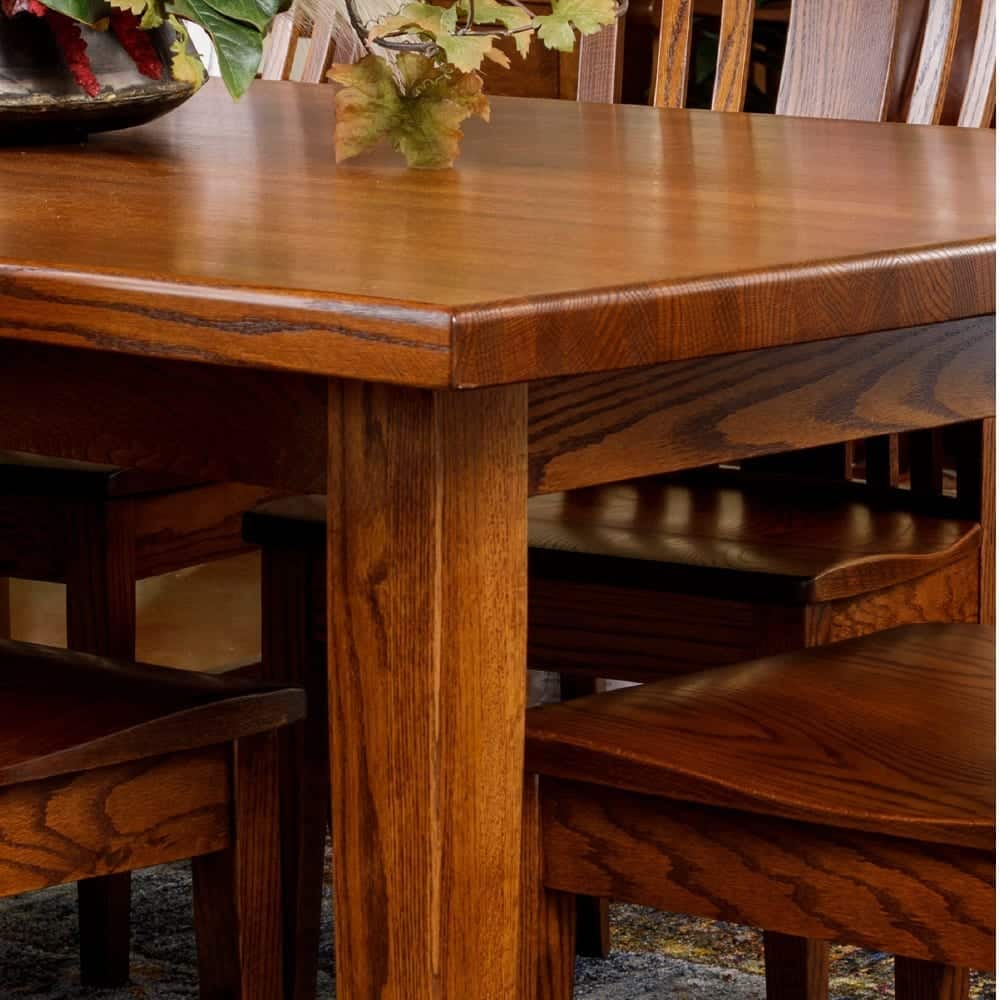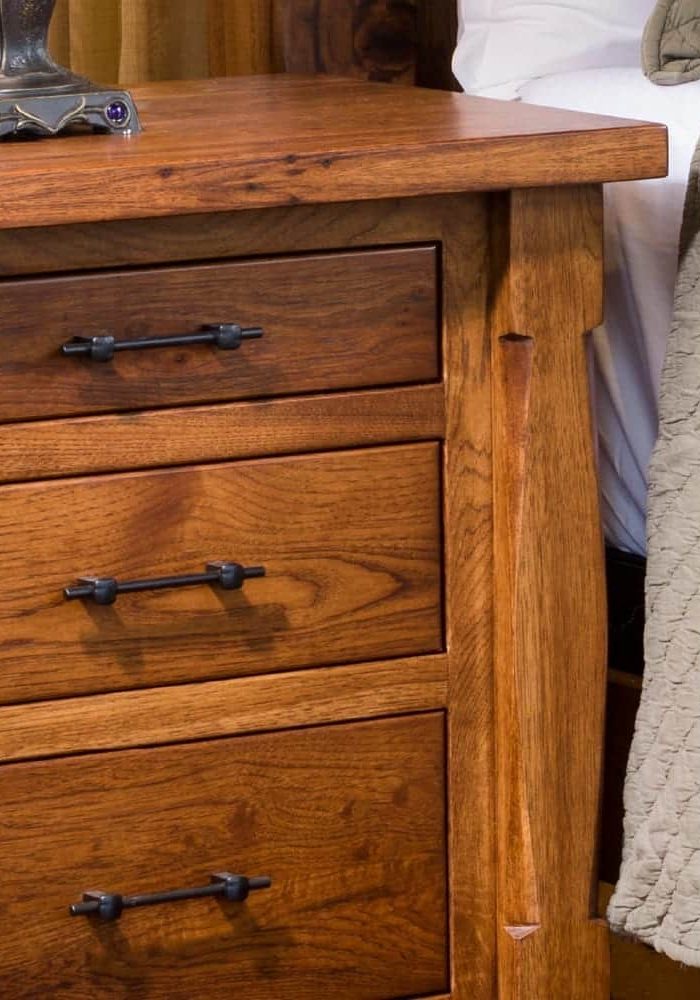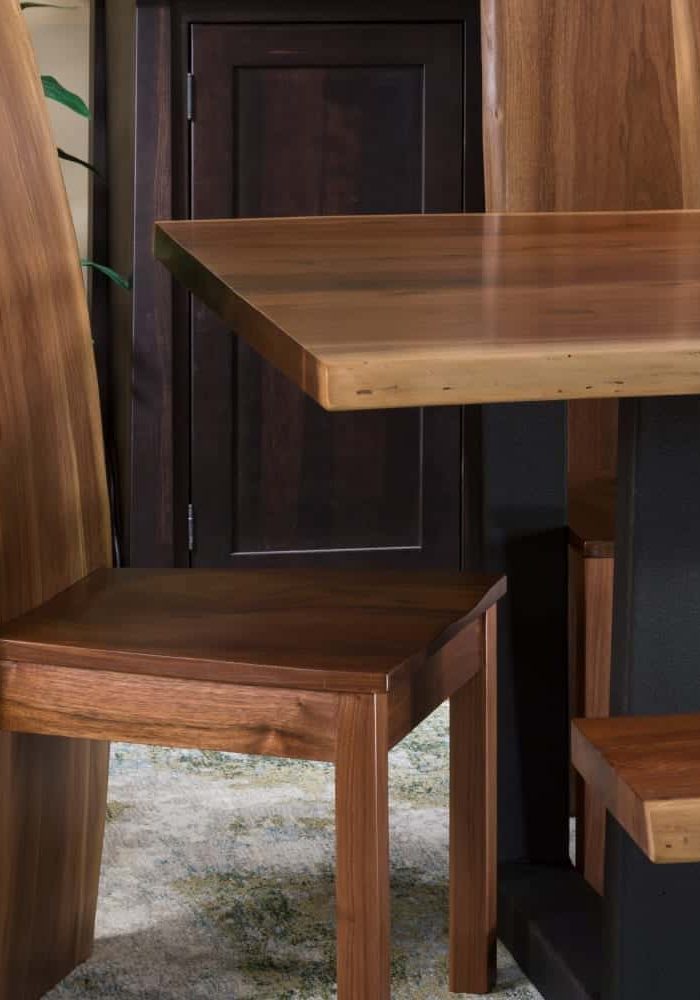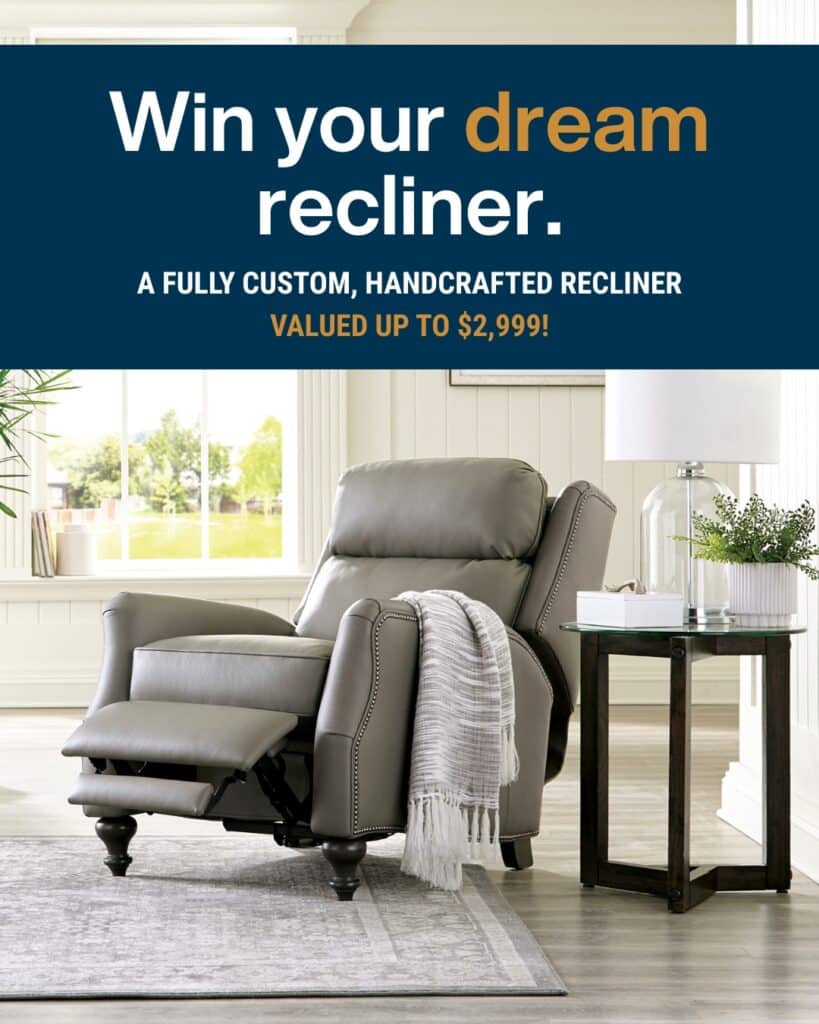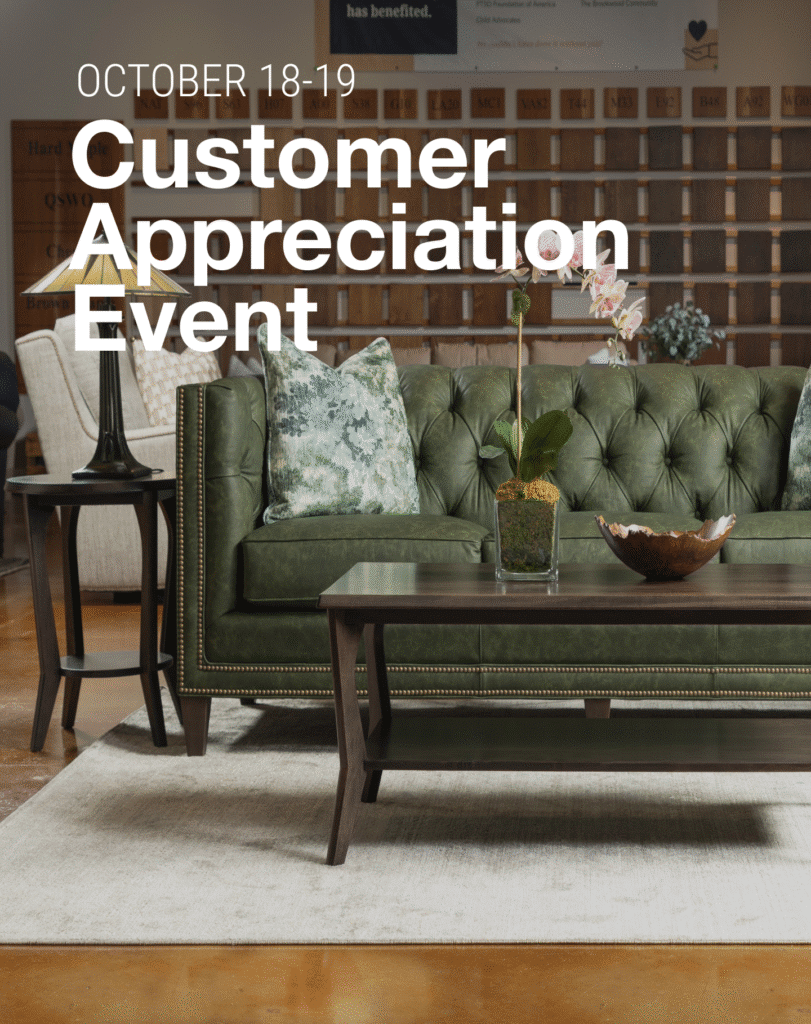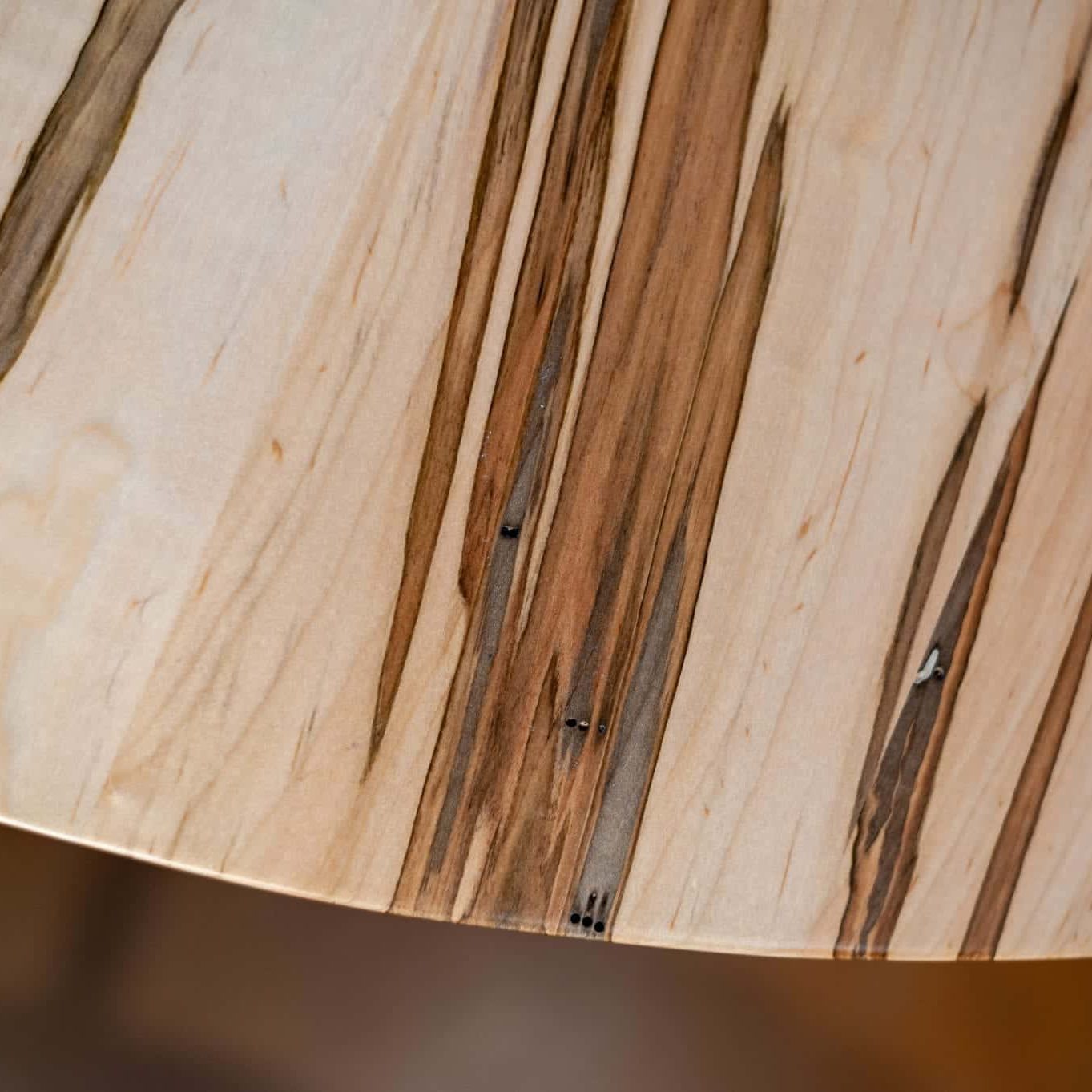
Every piece of furniture we sell is made with skill and attention to detail.
You will only find solid wood furniture in our store. We use woods of the highest quality to ensure your new furniture will last a lifetime (and beyond).
All of our furniture is custom-built in the US using solid milled hardwoods. It’s important for you to be informed of the different types and characteristics of the woods we offer. Here’s a quick FAQ, as well as a guide on how to choose the right wood for your next piece.
How much time do you have? There are a ton of reasons to choose solid wood over manufactured or engineered woods. Solid wood is milled directly from trees, unlike engineered woods which include plywood, particleboard, and veneers. Solid wood furniture is more durable, looks nicer, and ages better than any other option. Are you paying more? Yes. Will it hold up better, look nicer, and age more gracefully? Undoubtedly.
In a short answer: no. Many furniture manufacturers, including do-it-yourself kits, use a combination of plywood or veneer to give furniture the false impression of being solid wood. It’s not!
Veneer is a covering made of very thin wood, usually, only a couple millimeters in thickness. It is used to cover the surface of an object. It is easily stained and painted, and it can be made to look very similar to solid wood furniture.
Plywood, on the other hand, is made by gluing numerous strips of thin wood together. While plywood is more stable than veneer, it is not considered solid wood.
Veneer and plywood are typically used on the backs and sides of furniture. This allows the main parts of the furniture, such as the front and top, to be solid wood. While this type of furniture may initially appear to be completely solid wood, a large portion is not. This can often lead to peeling or tearing -- not a great look for your new furniture. That’s why we only use solid hardwood for our furniture.
Most of the hardwoods we use to make our furniture are Ohio Appalachian Hardwoods. That’s because we believe in supporting responsible forestry management. The trees used for our furniture are sustainably managed. By buying solid wood furniture you are supporting an industry that is vital to the US economy.
According to the U.S. Forest Service, hardwoods are a renewable resource “growing at 2.38 times the rate of harvest.” According to The Hardwood Federation, “the domestic hardwood products industry in the U.S. directly supports more than 685,000 jobs in 25,000 facilities generating $136 billion in annual income, and related industries tied to the supply chain support an additional 1.1 million jobs and add $212 billion to the economy. For every $1 million in the output of hardwood products, 5.3 jobs are created.” Our solid wood furniture is an American product supporting the American economy.
Yes, we believe in environmental stewardship. All of our wood comes from sustainably managed forests here in America. Today, we are happy to report that the US grows more wood than it harvests. When you buy a piece of our furniture, you can be confident the wood was harvested responsibly. American hardwood furniture offers quality, durability, strength, and natural beauty. In addition, this furniture is built to last for generations. This helps to keep furniture out of landfills.
